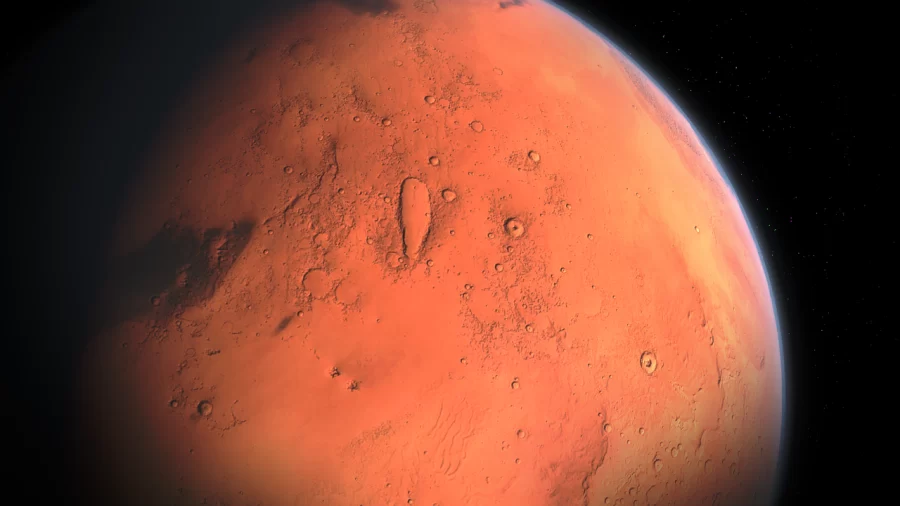The Chinese Rover Zhurong Makes a Surprising Water Discovery on Mars
The Chinese rover Zhurong found evidence that water existed on Mars for much longer than scientists had previously thought.
Zhurong had landed on Mars’ northern hemisphere in a plain called Utopia Planitia on May 15th, 2021, in the Tianwen-1 mission, with an initial primary goal to search for signs of ancient life by investigating the minerals, environment, and distribution of water and ice.
Prior research suggests Mars was once warm and wet, it underwent a transformation due to a still unidentified cause and became an arid, frozen desert after the water dried up during the Amazonian Epoch that began 3 billion years ago and continues through today. However, Zhurong’s initial exploration of Utopia Planitia sent back data that indicated that the basin had water during a time that scientists believed was dry and cold on Mars.
According to lead study author Yang Liu, a researcher at the Chinese Academy of Sciences’ State Key Laboratory of Space Weather and the academy’s Center for Excellence in Comparative Planetology, “The most significant and novel thing is that we found hydrated minerals at the landing site which stands on the young Amazonian terrain, and these hydrated minerals are [indicators] for the water activities such as [groundwater] activities.”
“This is a very interesting result,” said Eva Scheller, a planetary scientist at the California Institute of Technology. “We have very few recorded evidences of ‘young’ liquid water systems on Mars. And for the ones we have, they were usually in the form of salt minerals.”
Scheller stated that Zhurong’s observations of water molecules locked in the rock “is very interesting and different from other young liquid water environments that have been observed. It means that particular forms of water-bearing minerals would have formed at much later time periods than have previously been considered in other scientific studies.”
Researchers analyzed Zhurong’s data—which not only showed the sediments and minerals that were found in the basin but also had analyses of the rover’s surrounding environment—to find hydrated silica and sulfates which are similar to other hydrated minerals that were found during various missions made to study the regions of Mars. These minerals were within bright-toned rocks that make up a layer of duricrust, which forms when a significant amount of water, which can either be melting subsurface ice or rising groundwater, turns the soil into a hard crust after it evaporates. The rocks at the landing site helped showcase the minerals due to their contrasting colors.
Discovering this duricrust layer that is thicker than one formed by atmospheric water vapor (which is found at other landing sites on the red planet) allows scientists to deduce that Utopia Planitia and possibly other places on Mars had a more active water cycle than scientists had expected tens of millions of years ago. Not only this, but the data from the river adds to the continuously growing evidence discovered by Martian missions that instead of one dramatic shift that pushed the red planet into its current state, Mars rather had cycles between warm and wet, and dry and cold—those of which may have been the result of active volcanoes or other celestial objects, according to Yang. He also said that exploration using the rover specifically helped uncover the hydrated minerals at the landing site that orbiters’ observations did not before.
“So the discovery of hydrated minerals [has] significant indications on the geological and water history of the region and the climate evolution of Mars,” said Yang, who relates the interest garnered for Utopia Planitia from scientists to the speculation of a formerly existing ocean in the region.
Nearly all of Mars’ water is trapped in polar ice caps, while very small traces remain in its atmosphere. With the prospective discovery of subsurface water, human exploration could have a permanent resource and scientists could determine the planet’s potential for life.

Kriti is a freshman who loves to read, play the guitar, and find different foods to try and recreate. She enjoys listening to and exploring different kinds...












